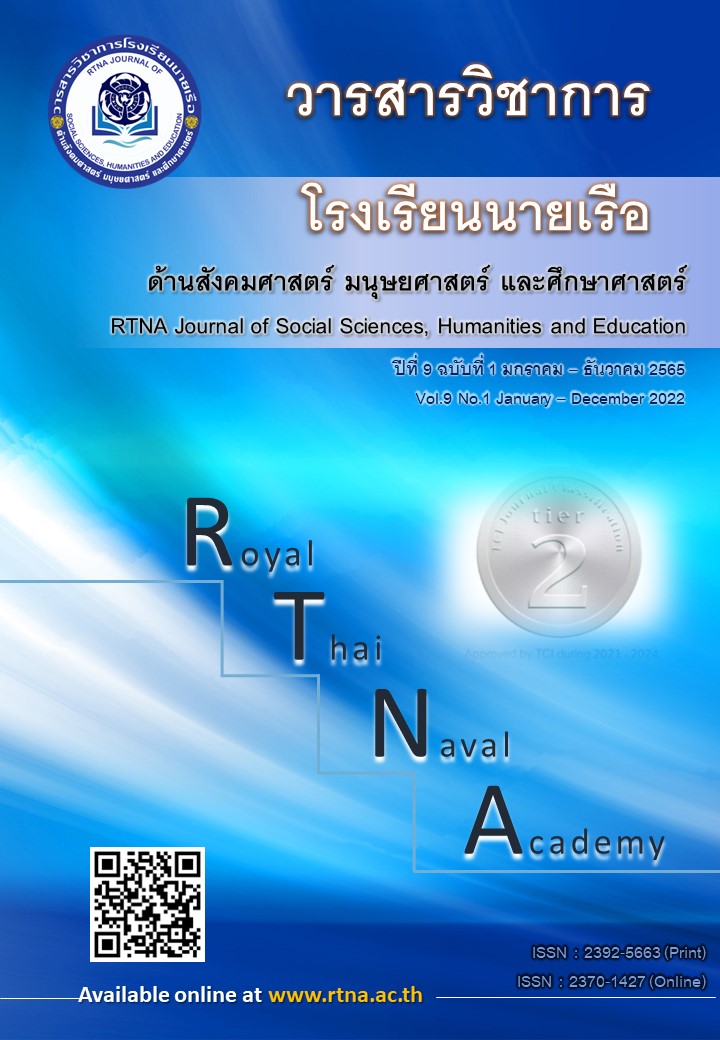Quality learning process management to create a connection between early childhood education and grade 1
Keywords:
Learning Process, Educational management, Early childhood, Teacher, Teaching, LeadershipAbstract
The learning management process for seamless integrating between early childhood and 1st grade is extremely important because transition from kindergarten to primary school effect the children’s learning ability. The suitable transition can help children for learning smoothly. The success for transition depends on three elements which are 1) leadership and educational administration and management, 2) teachers and the process of teaching quality and 3) Parent. All relevant person in charged must cooperate, support, and trust in connecting the learning of students from both levels.
References
กระทรวงศึกษาธิการ. (2546). พระราชบัญญัติการศึกษาแห่งชาติพ.ศ. 2542 และที่แก้ไขเพิ่มเติม (ฉบับที่ 2) พ.ศ. 2545. กรุงเทพฯ: กระทรวงศึกษาธิการ.
กระทรวงศึกษาธิการ. (2560). หลักสูตรการศึกษาปฐมวัย พุทธศักราช 2560. กรุงเทพฯ: สำนักวิชาการและมาตรฐานการศึกษา สำนักงานคณะกรรมการศึกษาขั้นพื้นฐาน กระทรวงศึกษาธิการ.
กระทรวงศึกษาธิการ. (2553). หลักสูตรแกนกลางการศึกษาขั้นพื้นฐาน พุทธศักราช 2551. พิมพ์ครั้งที่ 3.กรุงเทพฯ: กระทรวงศึกษาธิการ.
ณรงค์ พิมสาร และคณะ. (2563). บทบาทผู้บริหารสถานศึกษาที่มีต่อการพัฒนาหลักสูตรและการเรียนการสอน. วารสารครุศาสตร์ปริทรรศน์ คณะครุศาสตร์ มหาวิทยาลัยมหาจุฬาลงกรณราชวิทยาลัย. 7(2). 315.
พระราชบัญญัติการพัฒนาเด็กปฐมวัย พุทธศักราช 2562 (2562, 30 เมษายน). ราชกิจจานุเบกษา. เลมที่ 136 ตอนที่ 56 ก. หน้า 5-16.
ศิริวรรณ์ ฉายะเกษตริน. (2552) การสอนแจกลูกสะกดคํา. กรุงเทพฯ: โรงพิมพ์เดลินิวส์.
สำนักงานคณะกรรมการพัฒนาระบบข้าราชการ (มปป). การบริหารการเปลี่ยนแปลง Change Management. สืบค้น 29 เมษายน 2565, จาก http://web.sut.ac.th/qa/pdf/Knowledge-general/24-Change_Management1.pdf
สำนักงานคณะกรรมการการศึกษาแห่งชาติ. (2544ช). สาระสำคัญที่เกี่ยวกับบทบาทของบิดามารดา ผู้ปกครอง ชุมชนและผู้เรียนตามแนวทางพระราชบัญญัติการศึกษาแห่งชาติ พ.ศ. 2542. กรุงเทพฯ: สำนักงานคณะกรรมการการศึกษาแห่งชาติ.
สำนักงานเลขาธิการสภาการศึกษา. (2562). มาตรฐานการศึกษาชาติ พ.ศ. 2561. กรุงเทพฯ: สำนักงานเลขาธิการสภาการศึกษา.
สำนักทดสอบทางการศึกษา. (2562). คู่มือการประเมินความสามารถด้านการอ่านของผู้เรียนชั้นประถมศึกษาปีที่ 1. สืบค้น 29 ธันวาคม 2563, จาก http://www.kptpeo.moe.go.th/
สำนักงานสภาพัฒนาเศรษฐกิจและสังคมแห่งชาติ (2562). แผนแม่บทภายใต้ยุทธศาสตร์ชาติ. สืบค้น 4 มกราคม 2564, จาก http://nscr.nesdb.go.th/
สุกัญญา รอดระกํา. (2561). บทบาทผู้บริหารสถานศึกษาในยุคไทยแลนด์ 4.0. ใน การประชุมวิชาการเสนอผลงานวิจัยระดับชาติ “GRADUATE SCHOOL CONFERENCE 2018” 29 มิถุนายน 2561 (น.575-579). กรุงเทพฯ: มหาวิทยาลัยราชภัฏสวนสุนันทา.
อภิวุฒิ พิมลแสงสุริยา. (2563). ปัจจัย 4 ของภาวะผู้นำ. สืบค้น 30 ธันวาคม 2563, จาก https://slingshot.co.th/resources/library/
Adair, J.E. (2010). Strategic Leadership : How to Think and Plan Strategically and Provide Direction. London: KoganPage.
Copple, C. & Bredekamp, S. (2009). Developmentally appropriate practice in early childhood programs serving children from birth through age 8. 3rd ed. Washington, DC: National Association for the Education of Young Children.
Dombro, A.L., Jablon, J.R., & Stetson, C. (2011). Powerful interactions: how to connect with children to extend their learning. Washington, DC: National Association for the Education of Young Children.
Epstein, A.S. (2007). The intentional teacher: choosing the best strategies for young children’s learning. Washington, DC: National Association for the Education of Young Children.
Jensen, E. (2008). Brain-based learning : the new paradigm of teaching. (2nd ed). Thousand Oaks, CA. : Corwin Press, c2008.
Downloads
Published
Issue
Section
License
Copyright (c) 2022 Royal Thai Naval Academy

This work is licensed under a Creative Commons Attribution-NonCommercial-NoDerivatives 4.0 International License.
The author has the sole responsibility for the material published in RTNA Journal of Social Sciences, Humanities, and Education, which the editorial team may not agree on that material.
RTNA Journal of Social Sciences, Humanities, and Education owns the copyright of the text, the illustration, or other material published in the journal. No parts or the whole of the material published may be disseminated or used in any form without first obtaining written permission from the academy.






